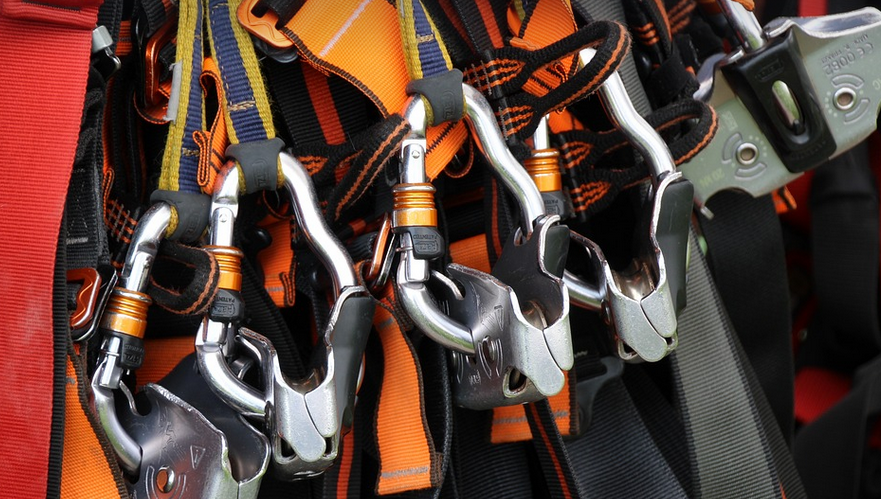
Conquer the Course: Your Beginner’s Guide to Olympic Triathlons
So, you’ve decided to take on the Olympic triathlon – a challenging and rewarding feat of endurance that requires dedication, discipline, and a touch of Olympic spirit! It’s no small task, but with the right plan and consistency, even beginners can successfully navigate this journey. This guide is your roadmap to success, breaking down the training process into manageable steps and highlighting essential elements for a smooth transition from novice triathlete to Olympic-ready competitor.
**Understanding the Trifecta: The Three Pillars of Triathlon**
Olympic triathlons test your physical and mental resilience through three disciplines – swimming, cycling, and running. You’ll need to master each one while maintaining a level head throughout. To truly conquer this beast, let’s explore the individual components that make up this exciting triathlon.
**Swimming: Flowing into Superior Performance**
The swim leg sets the stage for your entire performance. Mastering the technique is crucial, and it’s a skill you can develop gradually. Beginners should aim to build their comfort level in the water before undertaking long swims. Focus on proper stroke form, including arm movements, body position, and breathing techniques. Aim to maintain an efficient pace without sacrificing control.
**Cycling: Powering Your Way Through Miles**
Cycling is all about building stamina and power. You’ll cover a significant distance on the bike leg, requiring strength, endurance, and mental focus. Start with short rides to build up your time and distance gradually. As you progress, introduce hills or simulate race conditions to hone your cycling skills.
**Running: The Endurance Test**
The final leg is often the most challenging – the running portion! Running endurance is key to success in the Olympic triathlon. Start with short runs and gradually increase their distance and intensity. Incorporate cross-training into your routine for injury prevention. Remember, a solid base of running will give you an advantage throughout the race.
**Crafting Your Training Plan: A Personalized Approach**
Now that we’ve covered the basics, let’s dive into building a personalized training plan. Remember, there’s no one-size-fits-all approach. The key lies in finding the right balance for your individual needs and goals.
**Planning & Preparation: Building a Solid Foundation**
Before embarking on your training journey, it’s essential to have a clear understanding of your starting point. Assessing your current fitness level is crucial for setting realistic expectations. This helps you avoid setbacks and set achievable milestones.
**Building Your Base: A Starting Point**
Begin with a gradual increase in training volume, building a solid base for future challenges. Start by focusing on building endurance through consistent swimming sessions, cycling rides, and running intervals. These activities will help you develop the strength and stamina you need for later stages of your training.
**Week-by-Week Progress: Tracking Your Development**
Establish a weekly schedule with specific training goals in mind. Don’t rush the process – slow and steady progress is key to long-term endurance. Regularly track your workouts, noting your time, distance, pace, and overall performance.
**Nutrition: Fueling Your Body for Success**
Good nutrition plays a critical role in training. You need to provide your body with the right fuel to maximize performance. Focus on a balanced diet rich in carbohydrates for energy, protein for muscle repair, and healthy fats for overall well-being.
**Hydration: Staying Refreshed Through Training**
Drinking enough water is crucial throughout your training. It helps prevent dehydration, regulate body temperature, and keep you feeling energized. Carry a reusable water bottle with you during workouts to ensure consistent hydration.
**Rest & Recovery: Allowing Your Body to Rebuild**
While building endurance is important, so is allowing your body time to recover. Rest days are crucial for muscle repair and injury prevention. Take active recovery days like gentle yoga or stretching to reduce stress and promote flexibility.
The Olympic Journey: A Guide to Success
**Setting Realistic Goals: It’s All About Progress**
Don’t get lost in the grand vision of becoming an Olympic athlete. Set realistic goals for each training phase and celebrate your achievements along the way. Even if you don’t complete the full distance at first, focus on building a foundation of strength and endurance.
**The Power of Mentality: Harnessing Your Inner Strength**
A strong mindset is an essential ingredient in achieving success, particularly when facing demanding training challenges. Practice positive self-talk, visualize your goals, and develop a sense of determination to push through difficult times.
**Building a Support System: Sharing Your Journey**
Having a support system is essential for navigating the ups and downs of training. Share your journey with friends or join a local running club, triathlon community, or even online forums to connect with others who understand your challenges. Sharing your experiences can provide invaluable motivation and encouragement.
**The Olympic Spirit: Embracing Challenges**
Embrace the spirit of challenge and competition! Training is not just about physical endurance but also about mental resilience and pushing those boundaries.





